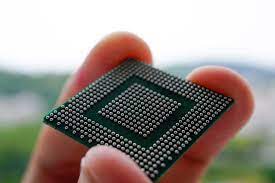The realm of Surface-Mount Technology (SMT) boasts a diverse range of integrated circuit (IC) packaging solutions. Among these, Ball Grid Arrays (BGAs) stand out for their unique design and performance capabilities. This article delves into the intricacies of BGAs, exploring their role within SMT and the advantages they offer.
BGA: A Space-Saving Powerhouse
A BGA is a type of surface-mount package that features an array of solder balls on its underside. These balls act as electrical connections, eliminating the need for traditional peripheral leads. This innovative design unlocks several benefits:
- Increased Density: By utilizing the entire bottom surface for connections, BGAs enable a significant boost in pin count compared to traditional packages. This translates to packing more functionality into a smaller footprint, ideal for compact and space-constrained devices.
- Enhanced Performance: The shorter electrical paths facilitated by the BGA layout contribute to improved electrical performance, particularly at high frequencies. This translates to faster signal transmission and reduced electromagnetic interference (EMI).
- Superior Reliability: The solder ball connections offer robust mechanical strength, making BGAs resistant to shock and vibration. This is crucial for ensuring the reliability of electronic devices in demanding environments.
Beyond the Basics: BGA Package Variants
The versatility of BGAs extends to their diverse package types, each catering to specific application needs:
- MAPBGA (Molded Array Process BGA): A cost-effective option for low-to-mid-performance applications, prioritizing low inductance and ease of surface mounting.
- PBGA (Plastic Ball Grid Array): Offers a balance between cost, performance, and reliability for mid-to-high-performance devices. It incorporates additional copper layers for improved heat dissipation.
- TEPBGA (Thermally Enhanced Plastic BGA): Designed for superior thermal performance, it utilizes thicker copper planes to manage high heat loads generated by the IC.
- TBGA (Tape Ball Grid Array): Targets applications demanding excellent thermal performance without an external heatsink.
- PoP (Package on Package): An ideal space-saving solution, it allows stacking a memory package on top of a base device.
- MicroBGA: True to its name, this compact BGA variant caters to applications with severe space limitations, available in pitches of 0.65mm, 0.75mm, and 0.8mm.
The SMT Advantage: Precision Assembly for BGAs
The intricate nature of BGA assembly necessitates a high degree of precision. SMT excels in this regard, leveraging pick-and-place machines for accurate component placement and reflow ovens for controlled soldering of the tiny ball grid. This automation ensures consistent quality and minimizes the risk of defects.
Conclusion: BGAs – A Cornerstone of Modern Electronics
The unique design and performance advantages of Ball Grid Arrays solidify their position as a cornerstone of modern SMT. From space-saving mobile devices to high-performance computing systems, BGAs enable the miniaturization and enhanced functionality that define contemporary electronics. As technology continues to evolve, BGA packaging will undoubtedly remain a critical component in shaping the future of electronics.

Pingback: What is Vias in PCBs - Contract Manufacturing
Pingback: What is Hot Air Solder Leveling (HASL) in PCB Manufacturing - Contract Manufacturing